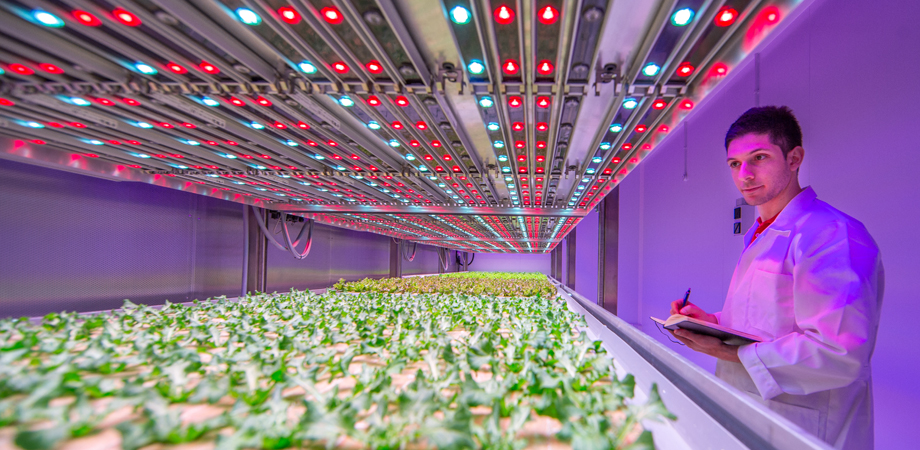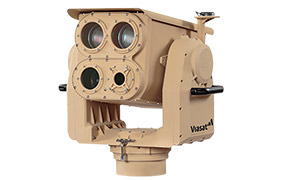Photonics for Net Zero: Much more than photovoltaics can help save our planet

Ask anyone to identify a photonics technology that they think is helping the environment, and the answer might typically be “photovoltaics.” Silicon that generates electricity by mimicking the process of photosynthesis is, as everyone knows, a key player in the push to eliminate CO2 emissions.
But when it comes to saving the planet, photovoltaics and the other well known star — energy efficient LED lighting — are not the only heroes.
The manipulation of light has plenty of unsung technologies that are truly contributing either to the reduction of energy consumption, to the operation of low or non-CO2 emitting generation processes, or to both.
“If you think about how does photonics impact sustainability, there are certainly three key axes,” notes John Lincoln, owner of business consultancy Harlin Ltd in Salisbury, England, and CEO of the Photonics Leadership Group, a UK industry association. While power generation is certainly one of the three, so, too, is energy use, as is the reduction of waste, he notes.
Whether it’s the optimized running of wind turbines, the energy efficiency of data centers, the maintenance of underwater high-voltage cables, the use of artificial light to grow crops, or any number of other applications, photonics are playing a key role in the quest to protect Planet Earth.
Take data centers, for instance. Who amongst us goes a day without using one? Communications, business, banking, shopping, entertainment, media, highway navigation, you name it — it’s all online, in the cloud, zipping through wires and the ether, and reliant on the electricity that feeds all the incumbent digital processes of storing, protecting, fetching, analyzing, and delivering. The Paris-based International Energy Agency estimates that data centers account for 1% of the world’s electricity consumption — a figure regarded by many as conservative.
Be it 1%, 5% or more, the point is: Data is the new oil indeed! Add in the constant ratcheting up of high-performance computers and the intensified processing for the artificial intelligence that is rapidly infiltrating human life, and you get the picture. Our IT-dependent lives are a monumental challenge to the environment.
The voracious power needs of the data economy and the resulting CO2 emissions is certainly something that the IT industry is paying attention to. Thus, over the last decade or two, there have been plenty of headlines about locating data centers in cool climates like Iceland and Sweden — chilling is a big part of the energy equation and in some of these locations the energy sources themselves are renewable — and about other ecologically minded data center architectures.
Couples Act
Short of the big sweeping picture of data center design and location, there is plenty of work evolving on how to make the inner workings of big computers and systems more efficient. Much of the effort relates to the processes involved in moving around optical signals.
For example, Meta — the computing giant formerly known as Facebook — is convinced that shortening the distance in a data center between an optical switch’s transceivers and its central processing chips could considerably slash overall switching energy consumption.
Switches connect the many servers in a data center. In today’s editions, the transceivers tend to be about 30 to 40 millimeters away from the central chips, also known as the ASICs.
Vincent Zeng, a supplier quality engineer for optics and networking in Meta’s sourcing and operations engineering group, spoke to Show Daily about the prospects for suppliers to move them closer together by co-packaging them on a common circuit board.
Co-packaging would not only make the process inherently more efficient, but it would also eliminate the need to run power separately to both the transceiver and the ASIC, Zeng points out.
While plenty of co-packaging work is underway in the supplier community, there’s a potential problem brewing. The directly modulated lasers (DMLs) in use in today’s distanced schemes are designed to be thrown out and replaced when they fail. The disposable approach would be untenable with a co-packaged board, because it would require the replacement of the entire board and its contents, including the ASIC.
“That would be a huge service cost,” says Zeng.
So Meta and many of the world’s other large data center users (round up the usual suspects!) are working together on a standard that would specify how to spot defects in laser chips during the fabrication stage — an advance that would cut down on failures during operation, and thus minimize any eventual need for costly board throw-aways.
“We need to take action to fix the problem before it is born,” says Zeng. “If we do not address this issue in the beginning, we’ll end up getting into big trouble.”
Zeng is working with cohorts at the other large end user companies to submit a proposal to standards group Telcordia in the first half of 2022. He hopes that Telcordia would then implement the idea as a standard.
Where VCSELs trump silicon
While transceiver and ASIC co-packaging portends promising reductions in data center power use, it is by no means the only photonic technology that could lead to such improvements.
Vipul Bhatt of II-VI Inc. provided insights to Show Daily on another way that laser technology could improve computer efficiency.
Inside any computing system, “it takes energy to carry information from A to B,” notes Bhatt, who is vice president of datacom marketing for the Saxonburg, PA-based materials and optoelectronics company. “There’s no way around it. The job of an optical link is to consume as little as you have to. Maybe the best we can do is make efficient optical links. As speed goes up, and distances go up and hardware has to burn more and more energy, maybe optics can do better.”
Bhatt notes the use of lasers in High Performance Computing (HPC) and in machine learning systems, observing that in certain instances, it’s time for those sectors to move away from lossy silicon photonics, and to instead implement more energy efficient multimode vertical cavity surface emitting lasers (VCSELs).
A prime example: when information is traveling on the order of 10 meters from, say, memory to processor in an HPS farm, then multimode VCSELs could slash energy consumption by 30% on their own, and by up to 50% when considering that they could eliminate the need for other power consuming components, such as re-timer circuits and fancy modulation schemes.
The same holds true in machine learning computer centers, where, again, connections might travel tens of meters between processors and enormous data banks. Likewise, in some large data centers, server to server connection can be sometimes be around 10 meters.
“High performance computing, machine learning systems and some server connectivity applications, that need tens of meters, not hundreds of meters or kilometers reach. In that case, I think the multimode VCSEL-based optical links are the most energy efficient,” says Bhatt.
The single mode silicon photonics that today’s system use, are, according to Bhatt, overkill. “They’re optimized for slightly longer reach, even if it’s two kilometers or ten kilometers, which some may consider not so long a reach, but it’s way longer than the ten or twenty meters you need for these three applications.”
And given that silicon photonics is inherently less efficient, the logical choice should be multimode VCSELs. “Silicon has to do the job of modulating light and guiding it,” notes Bhatt, pointing out that those tasks both entail energy losses.
“And the source of light is not yet in silicon,” he adds. “Silicon has failed to produce light. It makes a very inefficient laser. The laser is still the indium phosphide compound of traditional lasers.” While engineers have tried “all sorts of tricks” to couple the laser and the silicon, the process has rudimentary inefficiencies, Bhatt notes.
VCSELs, on the other hand, are lasers in their own right. And while a VSCEL “doesn’t produce a lot of power, it doesn’t need a lot of power,” Bhatt points out. Another advantage: the circular shape of a VCSEL pairs well with the cylindrical profile of fiber optics, which enhances efficiency.
Lidar harnesses the wind
To state the obvious, the “green” picture of any data center, or of any use of electricity, improves if the energy source itself is renewable. To that end, the photonics industry is hard at work not just on photovoltaics, per Hinzer’s work at Ottawa, but in plenty of other ways.
“Things that photonics can do in terms of net zero are about sensing and imaging — the tools to monitor the environment, to make sure that when we implement new technologies, that we are implementing them in the most efficient and effective way possible,” says Simon Andrews, executive director of Fraunhofer UK Research Ltd.

This “triple lidar system” from Fraunhofer intersects three beams to together scan the full volume of wind and help determine exactly where to locate turbines. Credit: Courtesy of Fraunhofer Centre for Applied Photonics
For example: wouldn’t it be great if wind turbines could be optimized by locating them in precisely the right spot to catch the wind, and to alter their blade angles and other aspects depending on conditions at any one time? After all, the wind is a fickle thing, constantly changing direction, velocity and so forth.
“We’ve made a variety of systems for the wind energy industry to make sure that they’re surveying the wind before they decide where to put the turbines,” says Andrews. “Putting them in the right place is vital, whether it’s a complicated urban or rural environment, or even at sea, putting them in the right place is very important. And then once you’ve installed one, how do you know it’s operating properly? You measure the electricity that’s coming out of them, but you have to measure the wind that’s arriving at the turbine. The only effective way to measure the wind is with lidar.”
Fraunhofer UK, based in Glasgow and an independent affiliate of Germany’s Fraunhofer-Gesellschaft, develops technologies that it licenses to commercial entities, largely through its Fraunhofer Centre for Applied Photonics. Its lidar wind detection systems range from what Andrews calls “cheap and cheerful” to sophisticated gear that ascertains wind conditions 5 kilometers away, providing time to adjust the yaw of the blades so that they are pointing directly into the wind when it arrives, or to shut down the turbine completely if the wind is going to be powerful enough to damage the turbine’s gear box. Lidar technology can also help alter the angle of the blades, which is a different aspect than the yaw.
“With turbine blades describing a circle of up to 200 meters now, the wind is very very complex,” says Andrews. “It can be going in opposite directions at the top and the bottom and the left and the right of these things.”
For operational applications, Fraunhofer mounts lidar systems on the nacelle — the cylindrical portion of a turbine in the center of the blades that houses generating components. For early stage locational applications, ground based lidar aims at the sky to help determine how features such as hills and buildings affect the wind patterns in a specific areas. “You need to work out the windiest place to put them,” says Andrews.
A wind lidar system works by reflecting light off of aerosols in the wind and looking for Doppler shifts. In a general sense it is similar to lidar reflecting off of cars and other solid objects for vehicular navigation, except getting it to work reliably with aerosols is a greater challenge.
It is a far more effective means of wind measurement than the traditional method of using anemometers — the opened halfglobes, or cups that typically twirl around at the end of a stem and have been around for hundreds of years.
“Cup anemometers just take a single point of information, they don’t give you information about the full volume of the wind,” says Andrews. Describing wind as “a turbulent melee of veers and sheers,” he notes that lidar provides the far reaching and three-dimensional view necessary for an effective analysis of a full volume. It would take thousands of anemometers to do the same job.
While lidar is more expensive — the Fraunhofer systems will range from $10,000 to $100,000, “you save vast amounts of money through the extra electricity that’s generated, so these will pay for themselves in no time at all.”
The are some non-Fraunhofer systems already on the market to help determine turbine location. Fraunhofer is currently well into trials of what it considers its more advanced technology with commercial companies in the North Sea. It already has users of the operational lidars mounted on turbine nacelles; those systems range in size, with the largest equivalent to the dimensions of a microwave oven.
Big squeeze continues
Meanwhile, Fraunhofer is continuing to develop other photonics with a view toward “net zero.” For instance, its laser-based fiber optic sensing systems can detect damage to the undersea cables that connect offshore wind turbines to land. The systems monitor movement, pressure and temperature, prompting maintenance alerts that help avoid costly failures and replacements.
And in another walk of sustainability, Fraunhofer is developing LED lighting systems that can be tuned to optimal frequencies for different crops in the indoor vertical farming industry, which as Andrews notes has the potential to reduce water consumption by a factor of 250 times compared with outdoor growth.
Back amongst the celebrity technologies of photovoltaics and LEDs, the march of progress continues.
“Those two aren’t done,” says Andrews. “Every one or two percent in efficiency that we can squeeze out of solar cells and lighting are absolutely vital.”
Whether the industry can squeeze all the way to zero remains to be seen. But as you've read in this article, the game is on.
Mark Halper is a freelance business, technology, and science journalist who covers everything from media moguls to subatomic particles. A version of this article was originally published in the 2022 Photonics West Show Daily.
Related SPIE content:
Photonics for Net Zero webinar
| Enjoy this article? Get similar news in your inbox |
|



